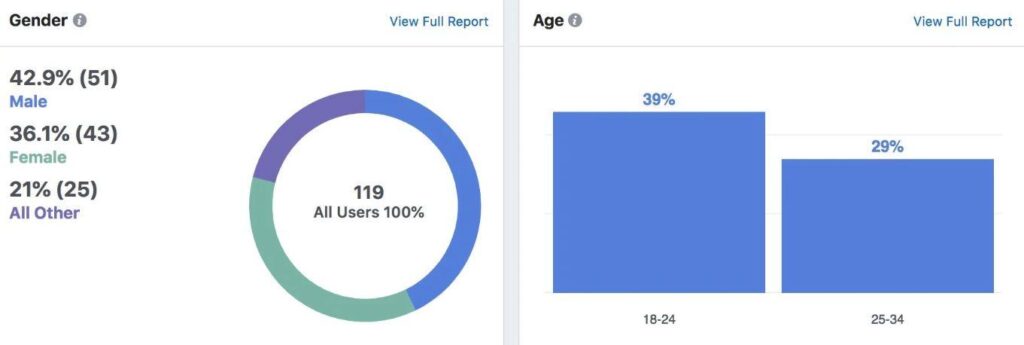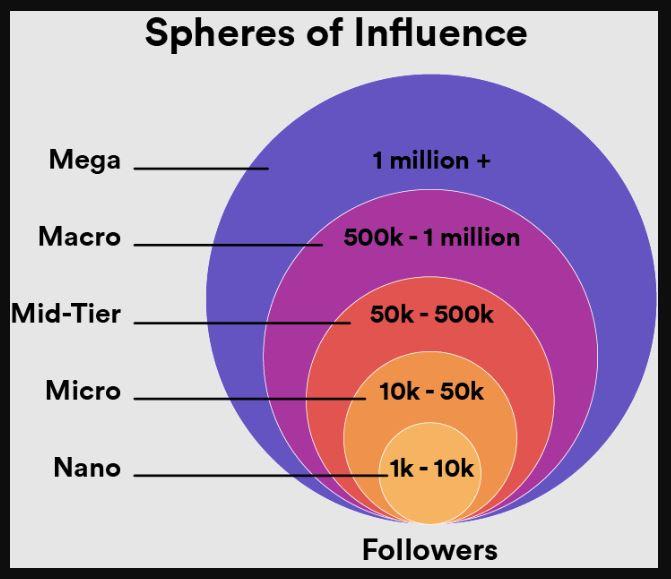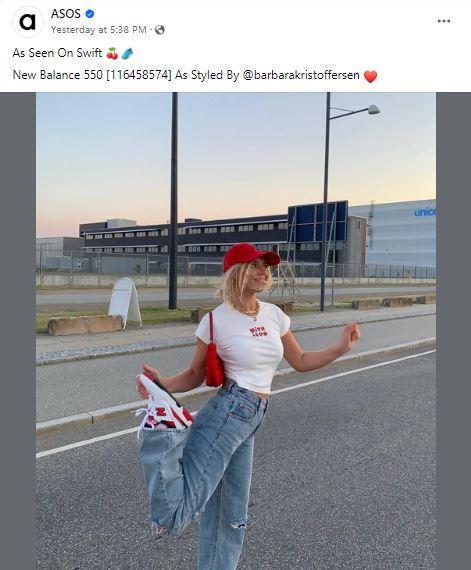6 Social Media Marketing Tips for eCommerce Engagement
Social media platforms are fertile grounds where eCommerce businesses can interact with their audience, build relationships, and promote their products or services. A well-crafted eCommerce social media strategy can help brands reach their target audience more effectively, fostering community and driving sales.
This post will explore six tips you can follow as part of your eCommerce social media strategy. They will help elevate your eCommerce engagement and set your brand apart in the crowded online marketplace.
Let’s get started!
1. Engage with Your Audience
Engaging with your audience is crucial to eCommerce social media marketing. It builds trust, loyalty, and a sense of community. Prioritizing audience interaction helps establish a strong online presence, driving sales and ensuring long-term success in the digital marketplace.
So, respond to every comment, query, and message, creating a friendly and supportive community around your brand. Don’t just limit yourself to the user comments on your own social media accounts. You can use social listening tools to monitor what people are saying about you. Then just surprise users by jumping in on conversations about you.
But, engaging with your audience goes beyond mere responses to comments made by your customers. It’s about initiating the dialogue yourself with the content you create.
For instance, you can run polls or Q&A sessions on popular platforms like Instagram or Twitter.

This tactic won’t just ensure you engage your audience. It will also ensure you make your audience feel valued and heard. Plus, you can gather valuable data that can be used to refine your products, services, and overall eCommerce social media strategy.
As part of your audience engagement strategy, you can also create social media copy that elicits responses. For instance, why not post an interesting fact about your company or any of the products you sell? Regularly share news related to your niche as well. Share your new blog posts, too. Just make sure you optimize your blog content to ensure it also ranks in search engine results pages. This way, with that content, you don’t just engage with your audience on social media. You can also interact with your audience who uses search engines to look for content. A reputable SEO agency can help you in content optimization if you don’t know your way around it.
2. Incorporate Video Content
Your social media posts don’t always have to be in the form of just written content. You can complement it with video content or just use stand-alone videos.
Videos are highly engaging and convey information in a dynamic and memorable way, capturing viewers’ attention effectively. Social media content formats like Instagram Reels, TikTok, and YouTube Shorts offer prime opportunities for wider reach and viral potential.
High-end fashion retailer NET-A-PORTER, for instance, leverages video content to showcase their curated luxury fashion pieces, offering styling advice, designer insights, and behind-the-scenes looks at the fashion world. They post this engaging and stylish content on YouTube, allowing viewers to see the products in action, understand the brand ethos, and get inspired by the latest fashion trends.
Visual content like videos allows for a more immersive and interactive experience, enabling fashion enthusiasts to explore styles, textures, and designs in detail.
You can also record and publish live sessions discussing new products on your social media. Your followers will appreciate these live sessions, where you can also address your target audience’s concerns in real-time. 💪
By embracing video content, eCommerce brands like NET-A-PORTER can also create a more impactful and resonant brand identity, driving conversions and establishing a distinctive presence. Combine it with a collaboration with a celebrity like Gigi Hadid (see video above 😃) and you’ve got a winning eCommerce social media strategy on your hands.
As a final tip, to ensure maximum visibility for your video content, make sure your social media network is big so you can reach as many people as possible. So, add YouTube and Facebook followers and get Instagram likes before you post.
3. Run Social Media Paid Campaigns
Running a paid social media campaign is vital for eCommerce engagement in social media marketing. It lets businesses reach their target audience with tailored content and offers, driving traffic and increasing sales.
For example, a clothing brand can run a Facebook ad campaign targeting users with interests in fashion, within a specific age range, location, and even with certain online shopping behaviors. This level of specificity in targeting enables the brand to reach potential customers who are more likely to be interested in its products. At the same time, they optimize the ad spend and increase the chances of conversion.
But using the ad targeting feature isn’t enough for you to generate results. Customizing ad content based on demographics and interests results in more effective advertising.
Let’s assume you’re an eCommerce store that sells a little bit of everything, and you want to specifically target your customers interested in fitness products. Instead of creating ads that showcase your pet accessories, you’d create ads that specifically showcase your treadmill or sports apparel. So, when these ads are strategically shown to users who have shown interest in fitness and wellness, they engage with the content, leading to higher conversion rates.
Paid social media campaigns also generate valuable data on customer behavior, helping refine marketing efforts.
By analyzing the performance data from your ads, you can gain insights into which products your audience prefers. But there’s more: you can learn what times are optimal for posting based on your audience’s behavior, and which audience segments are more responsive.


This kind of information enables you to refine your future advertising campaigns and social media strategy for maximum impact and ROI.
4. Partner with Influencers and Celebrities
Influencers and celebrities have a strong rapport with their followers. When they promote a product or brand, it reaches a wider audience who is also likely to engage with it. Additionally, these collaborations result in authentic content that resonates with their audience, driving them to the eCommerce platform and leading to increased sales.
So, if you’re promoting an eCommerce marketplace that specializes in handmade crafts, why not partner with a well-known DIY crafts influencer or a celebrity who loves craft, like Lauren Conrad? They can create content showcasing unique products from the marketplace and share tutorials on how to use them. These are all great for eCommerce engagement which can, ultimately, lead to sales.
Etsy is a great example of an eCommerce marketplace collaborating with lifestyle influencers and celebrities. They recently collaborated with John Legend, the world-class singer and songwriter.

If you’re just starting though, celebrities probably won’t fit within your budget 😉.

So, influencer marketing that specifically leverages figures with smaller spheres, like nano and micro-influencers, is your best option.
5. Use Hashtags
Hashtags categorize content, making it more discoverable. That’s why they’re a key component to ensure engagement on social media. They also connect posts to trending topics, expanding reach.
But don’t just choose any hashtag. You need to choose yours carefully. Consider an eCommerce marketplace that offers vintage furniture and home décor. By using specific and relevant hashtags such as #VintageFurniture, #SustainableDecor, or #UniqueHomeFinds, the online vendor can increase the discoverability of its posts among users specifically interested in vintage and unique home décor items.
You can also create a unique branded hashtag, for example, #UniqueVintageFinds, to consolidate all posts related to your store. This way, social media users can explore a wide range of products easily and interact with the brand and other active users.
Poshmark uses hashtags like #upcycleddress, #upcycling, and #secondhandshopping to inspire their followers to repurpose items available on their platform. By strategically placing these hashtags in their posts, they can attract DIY fashion enthusiasts looking for unique and sustainable fashion pieces.

Users can also utilize these hashtags to share their own purchases and experiences, creating UGC and fostering a community around the brand. We’ll talk more about this in the next section.
6. Leverage User-Generated Content
User-generated content is a powerful tool for engagement. Ads based on UGC have a click-through rate that’s 400% higher than the rate registered by regular ads. UGC posts shared on social media channels also see a 28% higher engagement rate than regular posts.
Besides, UGC acts as social proof, showcasing real-life experiences and endorsements from actual users. This tactic is incredibly valuable in the eCommerce sector as it can drive sales.
It’s no surprise ASOS, a globally recognized online fashion and cosmetic retailer, uses UGC all over its social media channels.
The brand skillfully leverages UGC by featuring real customers in its products, showcasing diverse and authentic styles and experiences. For instance, ASOS might share a Facebook or Instagram post where a customer is pictured wearing an outfit from their collection. This one is from its Facebook account:

This approach celebrates the individual style of their customers. At the same time, it acts as a powerful visual testimonial, encouraging other users to explore and trust the brand. By integrating real user experiences and styles, ASOS creates a relatable and inclusive brand image, driving engagement, trust, and eCommerce sales.
In Closing
Implementing a well-rounded eCommerce social media strategy is essential for enhancing engagement. Why do you need engagement? Well, the more people interact with your brand, the higher your chances for conversions in the competitive online market.
You learned six tips to implement as part of your eCommerce social media strategy. Actively engage with your audience, run targeted social media campaigns, and partner with influencers and celebrities. Strategic use of hashtags, user-generated content, and video content in your social channels is also key.
So, go ahead and implement these tips with diligence and creativity. Watch your eCommerce engagement soar!

Guest author:
David Pagotto is the Founder and Managing Director of SIXGUN, a digital marketing agency based in Melbourne. He has been involved in digital marketing for over 10 years, helping organizations get more customers, more reach, and more impact.
Yan Anderson is the Head of Content Marketing at CS-Cart with over 10 years of experience in the eCommerce industry. He's passionate about explaining complicated things in simple terms. Yan has expertise in building, running and growing eCommerce marketplaces. He loves to educate people about best practices, new technologies, and trends in the global eCommerce industry.

